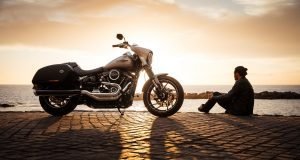Long Distance Motorcycle Touring
Updated on | By Mohit Chauhan
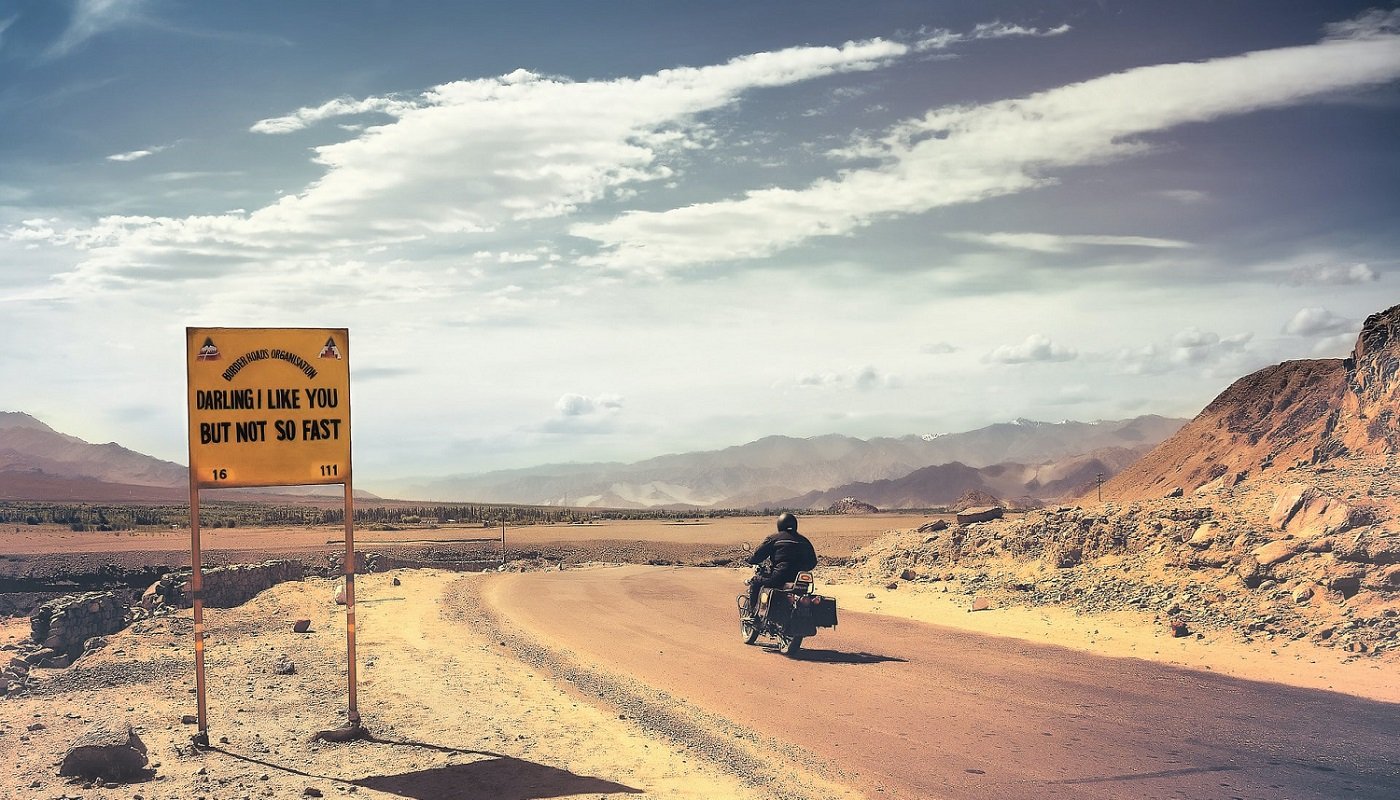
Reader Disclosure
Our editorial content is reader-supported. If you click on some of our links, we may earn a small commission. Learn more here.If you’re trying to figure out how to go the distance; there’s a tremendous amount of preparation that goes into riding a motorcycle on a long trip as opposed to driving a car the same distance. A lot of beginners do not realize that there are unique differences between a long haul car and a motorcycle tour, and it only becomes apparent when things are too late. Riding away from home on your bike without proper planning can actually turn out to be a disaster. It is important to consider planning as an integral part of your journey to make it wonderful and memorable.
First thing first, let’s take a look at the essentials that you need to pack while preparing for your trip.

How to plan a long distance motorcycle trip
Let us take a look at some of the important factors that needs to be kept in mind while planning a long haul motorcycle trip.
Pack Only Essentials
The most obvious and most common mistake is bringing too much stuff on the ride. Simply having too much gear makes motorcycle heavier than it already is and this will affect its handling especially off-road. Bring smaller versions of items like a compact travel towel and non-bulky tools. You don’t need different toiletry items since a bar of soap will do for your whole body and when you do need more clothes it’s pretty affordable or downright cheap depending on where you are in the world.
Avoid Excess Gears
Don’t go overboard with the gear that you are wearing. Keep it simple with boots, helmet, touring gloves and a nice riding jacket with a good back protector. Add a good pair of riding pants and you’re good to go also remember that when you’re traveling from the cold into the heat, you will need space to put away your winter liner that you’ll remove from your pants and jacket. Same goes with a rain suit if you’re bringing one.
Prepare Route Outline
Another mistake is not having a general plan outline of the trip, unless you want to end up running out of money barely halfway down your trip. Without basic planning you won’t have a realistic idea of how much the trip will cost, how long a trip will take and where you are going to be, especially when you have to cover too much distance and have too little time. So plot your route on one of the many online mapping services and add 20% to that number. Decide on which states or countries you really want to visit which regions are absolutely must seek and which parts of the world are so unique that you should stick around longer.
Pro Tip: During the beginning of your journey decide on how many miles you are planning to ride in a day. Make sure your plan is void of any circumstance that forces you to ride 2/3rd of the day. Often times you may come across a situation on a particular day that requires more riding; it is okay to deviate from the plan because your journey is always evolving. However, it is important to adapt on time.
Avoid Unfamiliar Group
Avoid Travelling with another rider or in a group without having ever done that. It’s a completely different experience when you are traveling with someone for extended periods of time, especially when you don’t really know them. Pleasant formalities or only lasts for so long and after a while the journey may turn out to be distressing. Everyone has their own unique personality, travel preference, riding style, and financial situation; these variables can mismatch on quite a few levels.
Pro Tip: Try to learn some motorcycle hand signals while riding in a group.
Focus On Journey Not Destination
It’s not about the destination, it’s about the journey. In most cases it’s true and the funny thing is that we tend to forget. We often create these arbitrary goals to travel the distance within X amount of time, these can be legit goals and pressures that you have to adhere to, but a lot of times when you’re honest with yourself you will realize that it doesn’t really matter and in most cases you’re literally free to ride. Moreover, there is a high chance of committing mistakes when your mind isn’t really there and you’re thinking about other things.
Word of Advice: A calamity is the sum of smaller mistakes that we commit. Riding in hurry and setting timelines can take you out of the moment because you’re too preoccupied with what’s ahead. You eventually miss out on some wonderful places that were worth stopping by.
Customize Your Motorcycle
Another important consideration while planning is to make your bike absolutely as comfortable as you possibly can. If your shoulders hurt while traveling, it is best to change your bars. Same goes for your seat as well, either have your seat adjusted or you can get a custom seat by many reputable companies. Make sure you have highway pegs installed as they make the ride really comfortable.
Pro Tip: Instead of making your motorcycle fancy, invest some money on comfort.
Inspect Your Motorcycle
It is highly recommended to do a thorough maintenance check two or three weeks before your long trip. We suggest doing it yourself because you may find flaws that can be missed by a service guy. If you do these checks in advance you may have time to order those parts since most dealerships don’t carry all the parts anymore.
How to prepare yourself physically
It takes a lot of effort to ride a motorcycle for an entire day; you need to be physically enduring as well as capable of holding your focus the entire time. So even if you have carefully planned your entire trip, external factors like weather may cause an adverse effect on your body. Here are some important pointers to be kept in mind in order to physically prepare yourself for a long haul motorcycle journey.
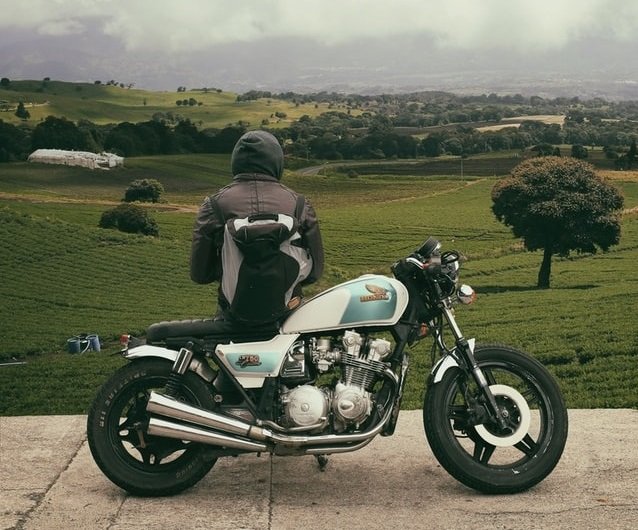
Understand Your Riding Capacity
Do not try to do a 1000 miles in one go if you have never even ridden 500 miles in a day. Similar to a marathon run where you cannot just decide one day to participate and complete the race, you have to work your way up to it in long distance riding as well. If you are a 100 mile per day rider, start increasing your mileage until you get to where you need to be. However, if you can do 700 miles per day in an eight hour period chances are pretty good you can do 1000 miles in one go.
Pro Tip: Ride 1000 miles before going on a big long trip especially if you are planning to go in a group. You do not want to be the guy that holds up everybody.
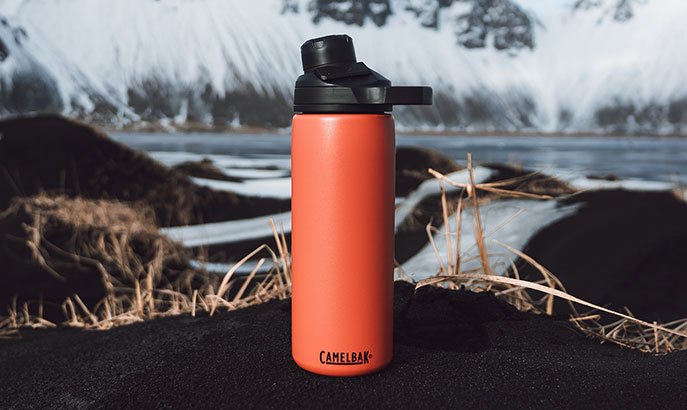
Hydrate Frequently
Let’s not overlook the importance of staying hydrated. Abrupt changes both emotionally and physically will start to happen when you get dehydrated. Once your body gets dehydrated it gets really hard to rehydrate and get things back to normal.
Hydrating yourself at gas stations is good, but having a system on the bike that lets you hydrate while you’re on the bike is even better. Most long distance riders only stop for fuel for the most part, so this way you can hydrate yourself without waiting for a gas station. Whether it’s a CamelBak (click to buy) you carry on your back, a simple water bottle with a cup holder, or a jug with a hydration tube; make sure you have something improvised to keep you hydrated.

Power Naps
It is important to understand when to and when not to fight dizziness. Once you realize that dizziness is becoming a huge problem, it is better to pull over and take a short nap. You can lie down on a park bench, a picnic table, a dedicated rest area or if nothing is available just find some grass fields. It is lot better to take a 40 minute power nap than trying to stay awake.
How to stay comfortable on a long distance tour
It is important to understand the ergonomics of your motorcycle to ensure a comfortable long journey. Ergonomics is the foundation of comfort on a long distance motorcycle trip and without this knowledge you just don’t stand a chance of staying comfortable for any length of time. No matter what bike you’re on (even a touring bike), if not set up properly it just won’t be apt for very long ride. There are lots of things you can do to increase ergonomics of your bike without spending money that will eventually make your ride comfortable.
Tip 1: Adjust the handlebars, levers, pedals, and shifts to the ideal position. Every motorcycle has some room to wiggle and adjust as per your height. These adjustments can improve your riding experience considerably without spending additional money.
Tip 2: Pack your stuffs in a manner that it provides you back support. Put your duffle bag on the passenger seat to make it a perfect backrest. Just make sure to pay attention to what you’re putting in the bag, there’s nothing worse than getting poked every time you think about resting your back. Better off by putting something soft there.
Tip 3: If you are not on a tight budget, you may consider installing different foot pegs, floorboards, and a comfortable seat made for long touring. Make sure you buy Highway pegs that adjust with your seating position.
Tip 4: Another important accessory that can improve your ride considerably is wind protector. One thing that will definitely wipe you out quick is your neck battling the full force of winds for the entire day. A windshield will go a long way in making your bike more aerodynamic as well as making your ride comfortable. Make sure the length of the protector is ideal with respect to your height, else it might take all the wind off your chest and redirect it straight to the helmet putting extra strain on neck.
Tip 5: Motorcycle Gears are like the frame of the comfort house that goes on top of your foundation for starters. No matter the climate, there is appropriate gear for every scenario. So make sure you are wearing the right gear for the particular climate.
Tip 6: Don’t leave on a long motorcycle trip with a brand new helmet that you have never tried before. Along these lines, consider wearing compression clothes that can help with long term comfort by keeping the muscles from shaking around too much from all the vibration that contribute to soreness at the end of the day.
Tip 7: No matter the bike, there are plenty of different positions you can ride in just make sure the riding position is safe and you are aware about the blind spots. If using cushion on the seats; make it a habit to switch it every other stop from not, because no matter how comfortable your seat is, everything on a motorcycle will eventually feel like a piece of plywood on a long tour.
Tip 8: Avoid heavy sweating as this can lead to rashes and even dehydration. There are some measures you can take to avoid such as choosing a seat cover with good airflow, opening the vents in your jacket, or even taking a detour that has less direct sunlight. You might also want to consider using some powder – anything to keep you dry because a rash in the middle of a motorcycle trip is sure to put a damper on things.
Also See: Best Riding Jackets for Hot Weather
Tip 9: Take breaks when you need them. It seems obvious but sometimes we forget to do this especially if traveling alone and there’s no one to hang out. Remind yourself to stop and enjoy the scenery around and to relax for a few minutes. This allows your whole body a much required break and also lets you to catch up with the surroundings. Indeed, taking frequent breaks helps comfort your body but it also gives your machine a breather, making the entire motorcycling experience much safer too.
Riding Gears & Essentials
Regardless of what motorcycle you ride; selecting the right gear means striking a balance between style, function, and protection. There are a lot of different ways you can go around this depending upon your tour. However, a few standard gears are ideal for almost all the type of cross continental motorcycle trip. Let’s take a look at them.

AGV Sport Modular Helmet
One of the ideal long distance touring helmet is the AGV sport modular helmet. The exciting thing about this helmet is that it’s one of the lightest in this category (weighing around 3 pounds). The carbon shell works its way down around the chin bar to protect just like a traditional full face helmet.
When it comes to safety standards, it is both DOT & CE approved. In terms of style, it is nothing less than what you would expect from AGV. It is very sleek and stylized, the insides fit to more of an intermediate oval so you get maximized internal comfort when you’re rolling down the highway at long distance.

Rukka StretchAir Jacket
Let’s move onto our second piece of riding gear which is Rukka StretchAir Jacket. The reason that you should purchase a premium jacket is that when you are long-haul touring you are basically living inside a jacket for more than 10 hours a day. A premium touring jacket will give you the most comfortable, protective and stylish look.
As compared to other premium brands, Rukka is worth every penny you invest. There are no mesh jackets available in the market that can possibly match the comfort and protection you will get out of the StretchAir, a lot of that has to do with the materials that they are using inside.
Rukka is extremely lightweight, moveable, and comes with a lot of stretchability in key places. This allows the riders to have all kinds of movement along with maximized protection in case of an abrasion or impact. So if you’re looking for the premium mesh jacket that gives you maximum comfort on a long distance tour; RukKa StretchAir should be your top pick among jackets.
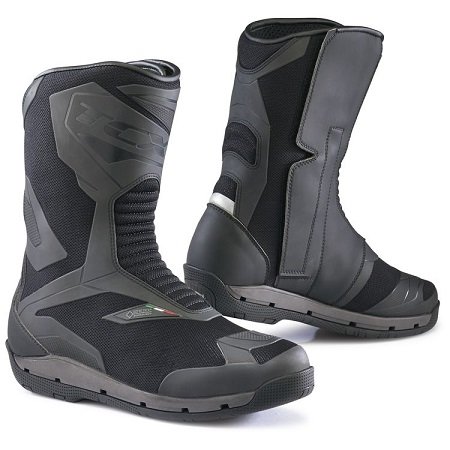
TCX Clima Surround GTX Boots
Our third pick is TCX Clima Surround Gore-Tex boots. So what TCX has done is they have worked with Gore and they have implemented their SURROUND® technology into the riding boots. The end result of this amalgamation is an all improved waterproof protection of Gore-Tex that comes with an air surround system for maximized air flow. Often times we see that a waterproof boot suffocates your foot and you end up sweating profusely.
This defeats the entire purpose of being waterproof as you are already soaked in sweat inside your boot. But with TCX you will never come across any such situation. While maintaining the airflow, it still maintains the sea level protection allowing you to wear in any kind of weather.
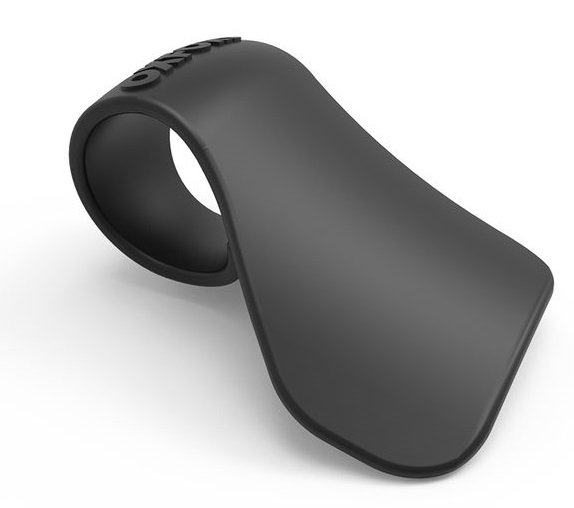
Throttle Assist
This is the single best thing you can do for your hands on a long haul and it costs between $12 and $20. A regular throttle control involves two muscles (fingers to apply brake and palm for twisting) that is why we get sore hands and wrists after a while. With a throttle assist the weight of the arm is all that is required to twist the throttle.
Trust us, this will provide you ultimate comfort while riding continuously for long house. It doesn’t really inhibit rolling off throttle, if anything the paddle is a reminder to stay loose on your grips which is a safer way to ride.
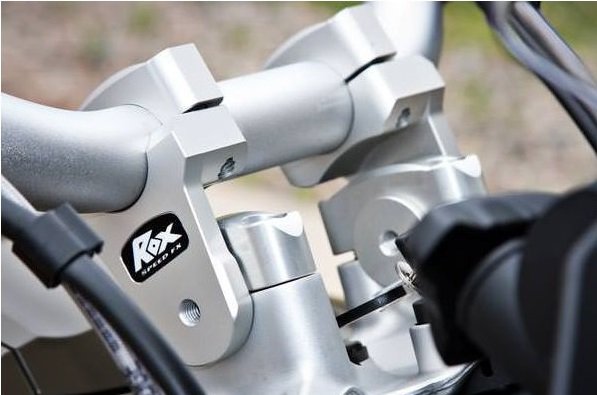
Bar Risers
To experience the smoothest ride on a long journey, installing additional bar risers with anti-vibration technology is highly recommended. They generally have two pivot points; one where the riser meets your clamp and the other where the upper clamp meets your handlebar. This add on will give you the comfiest height and angle to enhance your riding experience, simultaneously suppressing the vibrations that may cause aches in your body.
Along these lines, a motorcycle phone mount often comes in handy when you have to refer to your phone for directions.
What to wear on a long distance motorcycle tour
We all know that riding a motorcycle is as much about style and your persona as it is about riding the motorcycle. There are a lot of concerns related with style that you have to address to match up with the standards of the community. There is nothing wrong with it, however it is important to consider the efficiency of a product over its efficacy. Make sure your packing item performs the job it is meant for. Do not purchase and pack the product just because of the look it carries, this applies even during the daily commute as well. Think twice before buying a product and ask yourself if this will keep you dry and warm, or will this protect you in the event of an accident.
Jacket Layers
First thing to consider is the base layer and mid layer for your jacket. Make sure you have appropriate layers of jacket depending on your destination that protects you from any kind of temperature. Also keep in mind that the temperature would be different depending upon the month. So if you are heading to Alaska in the month of July, you should not expect a very cold weather, but some chilly mornings.
Casual Clothes
Casual clothing is required when you are not riding and is one of the biggest decisions that you have to make when you start packing.
So how much should you pack?
This factor is important while packing else you might end up packing for 10 days even for a 2 week long trip. Avoid over packing or you might end up with two full bags of clothes that you might never even use. In order to decide the amount of clothes you need to pack, firstly segment your journey into small mini trips. So whenever you reach at an end of your mini tour; try to wash your clothes and get yourself prepared for the next mini tour.
Pro Tip: One of the ideal ways to minimize your packing is to follow the 4th day laundry schedule. Use the four set of clothes every day till you reach the last day and every fourth day wash all your dirty clothes so that you can continue on again with fresh clothing.
Safety Tips
One of the most commonly neglected topic that is very important to consider while planning a long distance motorcycle tour is safety. We have mentioned this time and again, no matter how many years of experience you carry along with you; every time you are riding a bike there is a certain amount of risk that you are taking.
Tip 1: It is important to wear all your motorcycle gear; Helmet, Jacket, Gloves, Boots, Riding Pants and Ear Plugs.
Tip 2: Always drive within your limits and skip any dangerous part while planning your route.
Tip 3: No matter how much safety courses you have undertaken, a lot depends on the geographical location and your ability to adapt with them. A rider from the western hemisphere may find motorcycle touring in India pretty difficult, so you will need to adapt to the chaotic traffic to overcome these challenges.
Tip 4: The most important aspect of your motorcycle adventure journey is to avoid taking any risks to create an artificial adventure.
Tip 5: No matter what type of motorcycle or brand you prefer, it is important to give your machine the respect it deserves.
Tip 6: Avoid over speeding and appreciate the freedom.

